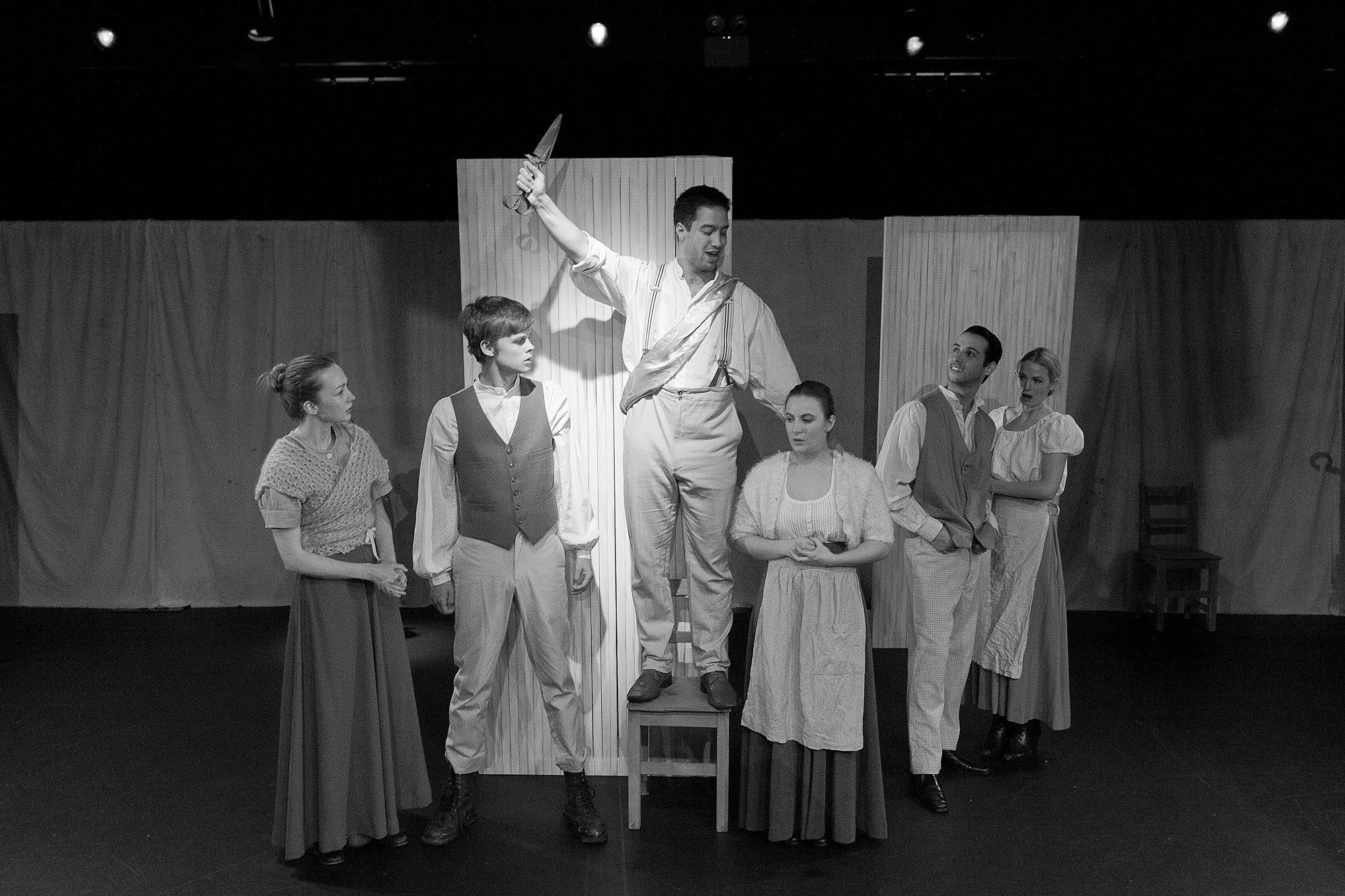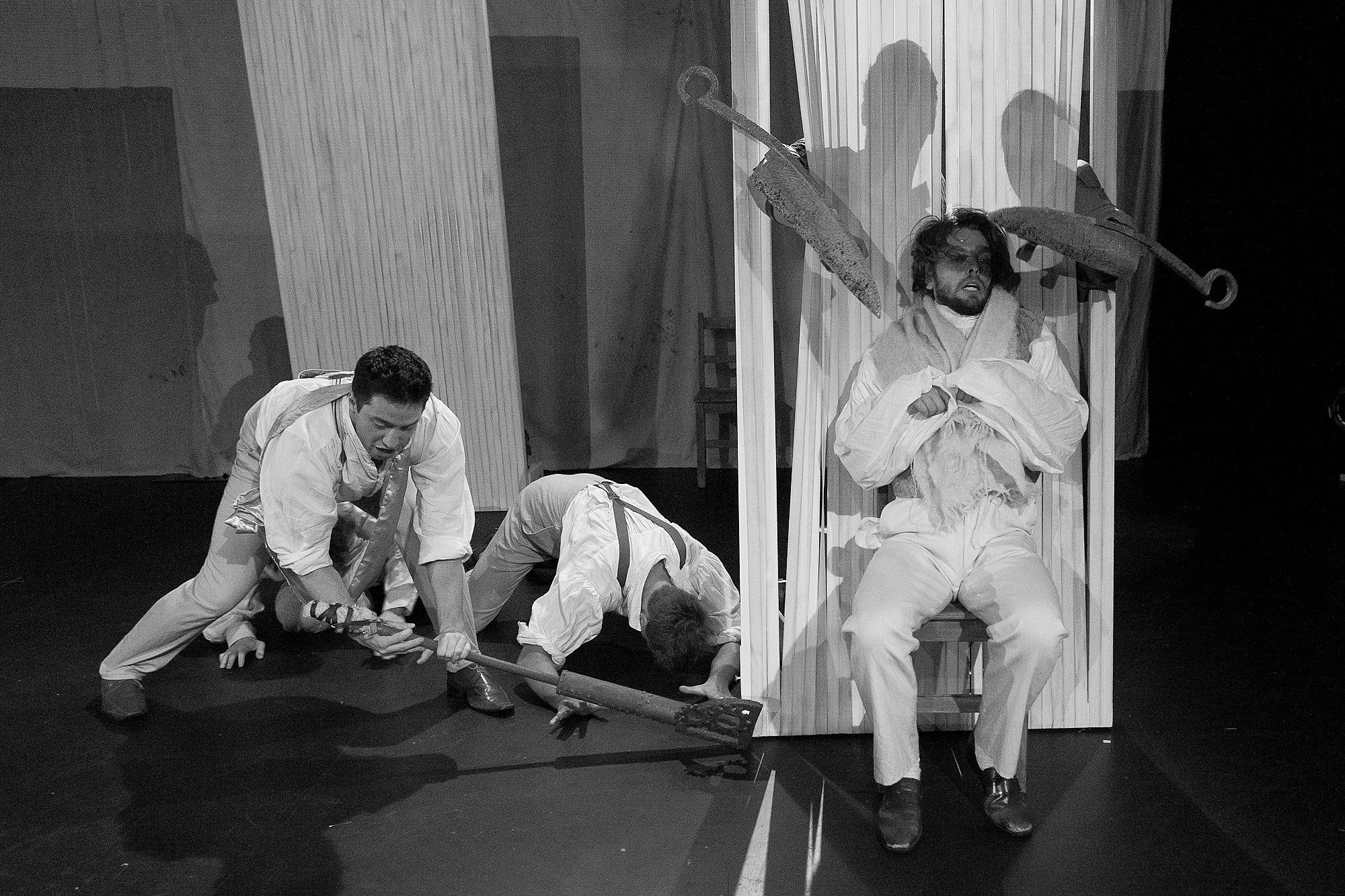Review: Sheep
The Actors' Program's production of Sheep struggles to create the sense of a whole.
Arthur Meek’s Sheep traces the lineage of two families of immigrants to New Zealand - the German Albrechts and the British Pykes - stretching from the 1860s through to the aftermath of the 2011 Christchurch earthquakes. It’s a rangy work composed of generational vignettes, and serves as the graduation showcase for the students of the Actors Program.
Directed by Ben Henson, the play begins with a contemporary couple, one Kiwi, the other a German, who are talking over skype. The call ends with the rumblings of the second Christchurch earthquake, at which point we’re plunged back to a brothel in colonial Canterbury. The two family lines start here with a German business man named Karl Albrecht and the writer and sensualist Samuel Butler, both of whom are visiting a plucky sex worker named Mary Pyke. From there we flutter through time till we arrive back in the present day.
Meek’s script is broad and sweeping in its scope, and he’s opted to allow the work to wander stylistically, moving from naturalism to melodrama and even into a kind of Brechtian Meta-theatre. The family trees are meticulously plotted and the A to B narrative of two intertwining families falling apart and coming together over multiple generations is interesting enough, and there are various themes which ping-pong through time with them.
Wool and our ovine industries naturally serve as a blanket of sorts. At the end of the day, there will always be sheep. Yellow-eyed penguins, too, feature as an enigmatic link. Precious and revered, the family opens and closes with the movements of hoiho. Butler’s technophobia (see Erewhon) also emerges again and again, rising as if to speak to something, though I’m not sure what. Perhaps Meek just sees this unease with the machines as an endearing or crucial component of the Pakeha identity.
The narrative feels episodic, which is probably unavoidable given the conceit, but Henson cleverly allows characters from the past to linger, silently observing their future generations. It’s a beautiful image that speaks to the ephemeral qualities of time and memory, simply and eloquently, without saying a thing.
There's the odd accent blunder and occasionally the cast succumbs to the temptation of its premise and plays the text a little too grandiose. The unfortunate side-effect is characters losing connection with one another and their humanity as individuals. They transform themselves into mouthpieces for historical record or ideas, and their scenes become dioramas to our past, rather than the fleeting glimpses of New Zealanders living their presents that they promise to be.
While the structure of the piece was well-planned and easy enough to read as a narrative, Sheep lacked the aesthetic cohesion Henson usually brings to the table. The scenes felt disjointed. John Parker’s versatile set allows for the huge variance of historical setting, and acts as a kind of symbolic blank canvas, but the videography projected onto it feels superficial. The score also feels heavy-handed at times, telling us what to feel rather than supporting the work. Transitions between scenes mostly consisted of a change in lighting state and an overbearing sound cue, which didn’t help in the construction of a sense of whole.
Like the bitter existential image that closes the show, we’re left with the impression we’ve born witness to a cast of sheep, rather than real people, living the truths of their moments in time, and envisioning themselves to be something as special as a hoiho, as we all do when playing the protagonists of our own lives.



